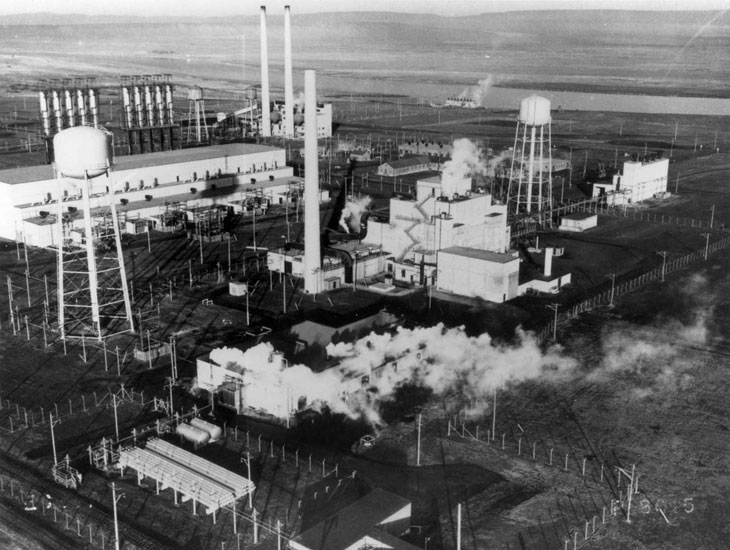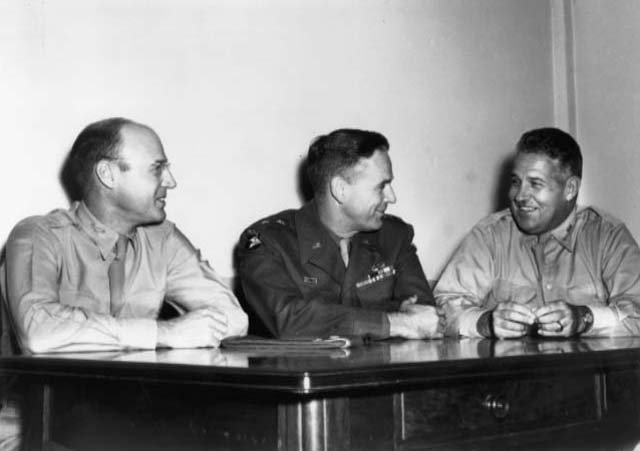Background Information: The U.S. Department of Energy (DOE) traces its origins to World War II and the Manhattan Project effort to build the first atomic bomb. As the direct descendent of the Manhattan Engineer District, the organization set up by the Army Corps of Engineers to develop and build the bomb, the Department continues to own and manage the Federal properties at most of the major Manhattan Project sites, including Oak Ridge, Tennessee; Hanford, Washington; and Los Alamos, New Mexico.
In a national survey at the turn of the millennium, both journalists and the public ranked the dropping of the atomic bomb and the end of the Second World War as the top news stories of the twentieth century. The Manhattan Project is the story of some of the most renowned scientists of the century combining with industry, the military, and tens of thousands of ordinary Americans working at sites across the country to translate original scientific discoveries into an entirely new kind of weapon. When the existence of this nationwide, secret project was revealed to the American people following the atomic bombings of Hiroshima and Nagasaki, most were astounded to learn that such a far-flung, government-run, top-secret operation existed, with physical properties, payroll, and a labor force comparable to the automotive industry. At its peak, the project employed 130,000 workers and, by the end of the war, had spent $2.2 billion.
The legacy of the Manhattan Project is immense. The advent of nuclear weapons not only helped bring an end to the Second World War but ushered in the atomic age and determined how the next war, the Cold War, would be fought. In addition, the Manhattan Project became the organizational model behind the remarkable achievements of American "big science" during the second half of the twentieth century. Without the Manhattan Project, DOE, with its national laboratories — the jewels in the crown of the nation's science establishment, would not exist as it does in its present form.
Preservation Work: DOE is proud of and feels a strong sense of responsibility for its Manhattan Project heritage. Following the end of the Cold War, the Department began a process to thoroughly document the project and preserve and interpret — in place, if possible, in a museum or other setting if necessary — the historically significant physical properties and artifacts from the Manhattan Project era. In the 1990s, the Department developed a list of eight Manhattan Project properties, designated as "Signature Facilities," that provided the essential core for successfully interpreting the Manhattan Project mission of developing an atomic bomb. In 2011, the Department joined with the Department of the Interior in recommending to Congress the establishment of a Manhattan Project National Historical Park, with three sites at Oak Ridge, Hanford, and Los Alamos. In December 2014, Congress passed the National Defense Authorization Act of 2015, which included provisions authorizing the Park to be located at the three sites. President Obama signed the National Defense Authorization Act into law on December 19, 2014. On November 10, 2015, Secretary of the Interior Sally Jewell and Secretary of Energy Ernest Moniz signed the Memorandum of Agreement between the two agencies defining the respective roles in creating and managing the park. The agreement included provisions for enhanced public access, management, interpretation, and historic preservation. With the signing, the Manhattan Project National Historical Park officially was established.
Resources: The Department has developed and made available to the public — in print, online, and on display — a variety of Manhattan Project historical resources, including histories, websites, reports, and document collections. On July 16, 2013, the 68th anniversary of the Trinity test of the world's first nuclear weapon, the Department launched The Manhattan Project: Resources, a web-based, joint collaboration between the Department’s Office of Classification and its History Program. The site is designed to disseminate information and documentation on the Manhattan Project to a broad audience including scholars, students, and the general public. The Manhattan Project: Resources consists of two parts: 1) a multi-page, easy-to-read history providing a comprehensive overview of the Manhattan Project, and 2) the full-text, declassified, 35-volume Manhattan District History commissioned by General Leslie Groves in late 1944. The new site brings together an enormous amount of material, much of it never before released.
In conjunction with the opening of the Manhattan Project National Historical Park, the Department on November 10, 2015, launched the K-25 Virtual Museum website. The site features a timeline chronicling the road to the atomic bomb via East Tennessee, a K-25 site tour where the visitor can "walk" through decades of skyline changes, a glimpse of daily life in the construction camp known as Happy Valley, and a preview at preservation efforts planned to commemorate the K-25 Manhattan Project site.

Manhattan Project Historical Resources

DOE History Timeline

